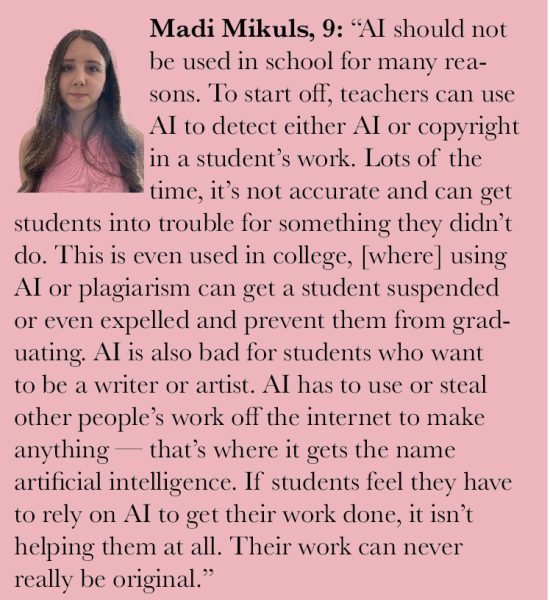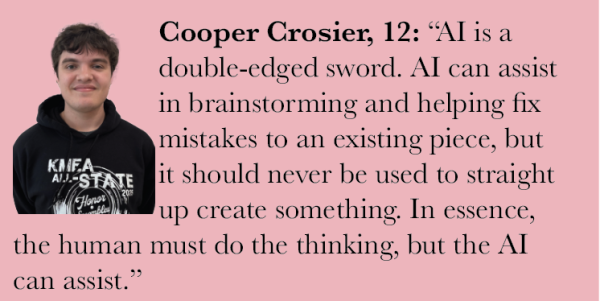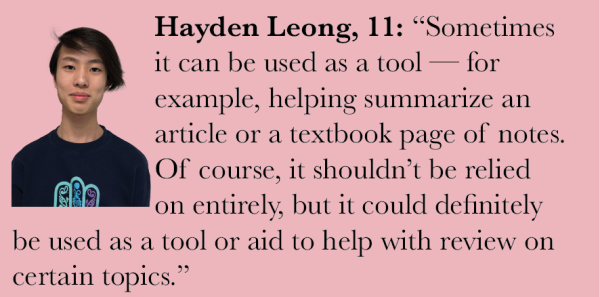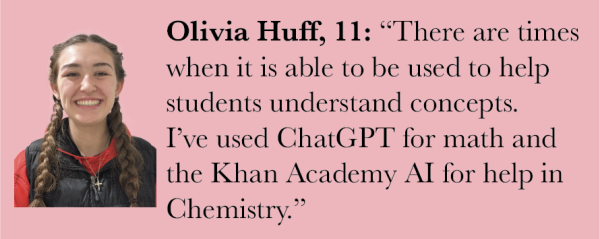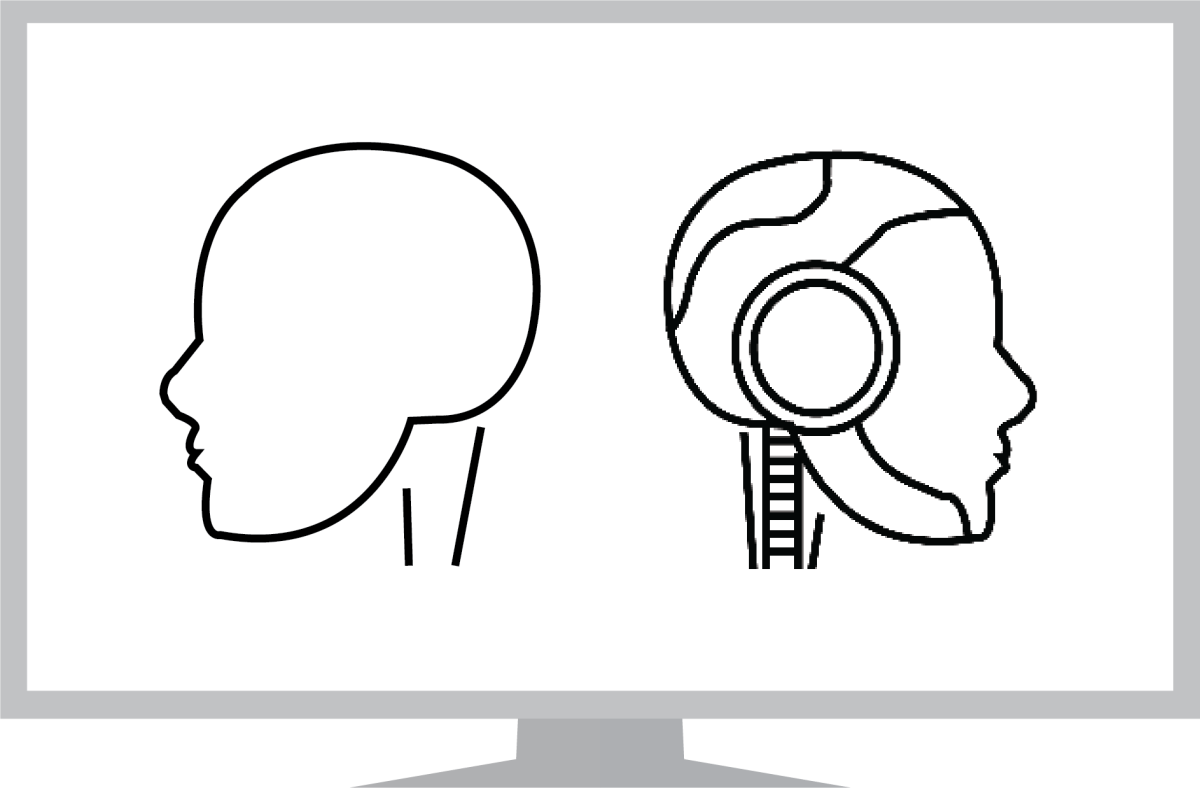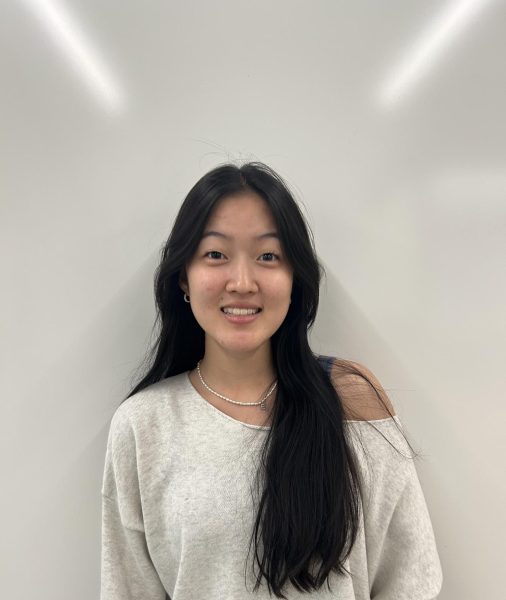With a new era of technology, artificial intelligence has become an increasingly crucial topic of debate. Able to be used in diverse fields, its role in education remains controversial.

Public Speaking, Competitive Speech and Debate teacher Mac Phrommany believes it’s a teacher’s responsibility to guide students in utilizing it properly.
“If we are not using AI in our classrooms and teaching our students how to use it effectively, we are holding kids back from actually getting ahead of the curve with their learning experience,” he said. “[It’s like] telling people not to use cell phones or the internet. If we stuck with that logic, generations of students would be massively behind.”
In his classes, Phrommany teaches how to use the tool. Yet, he accentuates that there should still be limitations — especially in education.
“It’s a fantastic brainstorming tool — it should be used for getting over writer’s block, generating ideas and having another resource to play around with, [but] I don’t think it should ever be a substitute for doing actual work and generating novel contents, because AI is inherently a copy-and-paste job of different parts of the internet,” Phrommany said. “[In my classes, my policy is] no AI with work I expect you to be doing on your own, but AI is fine in the brainstorming process.”
With the widespread accessibility of AI, it’s difficult to enforce these rules. Navigating this conundrum, teachers have created their own policies to regulate it.
“I haven’t had any AI issues this year, but I have had in the past. It’s so obvious [when students use AI.] My general predisposition is if it’s a minor project, I give them a zero,” he said. “If they come up to me and tell me they can define this word, or they are belligerent enough to say they actually did the work, I’ll have that conversation. Anytime I’ve zeroed out an AI assignment, there’s never been any resistance because they know and I know.”
This concept of appropriate time and place in education is exactly what Phrommany believes is the biggest drawback of AI.
“It is difficult to teach students when the appropriate time to use AI is because they need to see what is going to maximize their long-term growth potential,” he said. “If we don’t teach them the nuance and show them the value of when to use AI and when to use your own brain and struggle a bit, we’re going to have a difficult time getting them to use it at the appropriate times. It’s difficult to tell students that they need to struggle a little bit more to learn and grow when the easy solution is AI.”
Therefore, this disadvantage is exactly why Phrommany believes allowing it in schools is the correct response.
“It’s the newest era of technology we need to be learning,” Phrommany said. “It will be the future.”
Ever-evolving, AI is a complex topic to broach. Multifarious aspects shape opinions around the technology, making i
ts benefits as huge as its weaknesses. Thus, English teacher Erica Harms believes AI should not have a place in classrooms.

“I expect all work to be students’ own original thinking, sweat and tears — I consider my job to be teaching not only reading and writing but critical thinking and argument-building as well,” Harms said. “Students need to have the necessary skills and confidence to do their own thinking and writing before they lean on AI to do [it] for them.”
Harms agrees with Phrommany that AI is something that needs to be taught how to use properly.
“AI in education is inevitable, and it is up to teachers and parents to teach students there are not only times and places to use it but ways and means as well,” she said. “Knowing when and how AI is acceptable is critical for success.”
Especially for her English courses, Harms believes AI can help students study difficult topics and offer review guides.
“One area AI could be implemented is through targeted practice of concepts that students are struggling with,” she said. “AI can assist with all sorts of review tools: slides, summaries, extra practice with explanations, and more. [It helps] students take control of their learning.”
Yet, this is the limit to which Harms believes AI should be utilized.
“The disadvantage [of AI] is cultivating a sense of over-dependence on a tool that does the challenging stuff for you and during low- and high-stakes practice,” Harms said. “If students are dependent on AI for practices, students will have a hard time living up to their potential when the stakes are high.”
With an over-reliance on AI, learning can become stagnant.
“I won’t speak for every opportunity or every person, but in my classroom, I want students to understand they are here to think for themselves first and to fail safely,” Harms said. “Frustration is healthy because it leads to growth — it is a crucial part of the process.”
Student Opinions:
